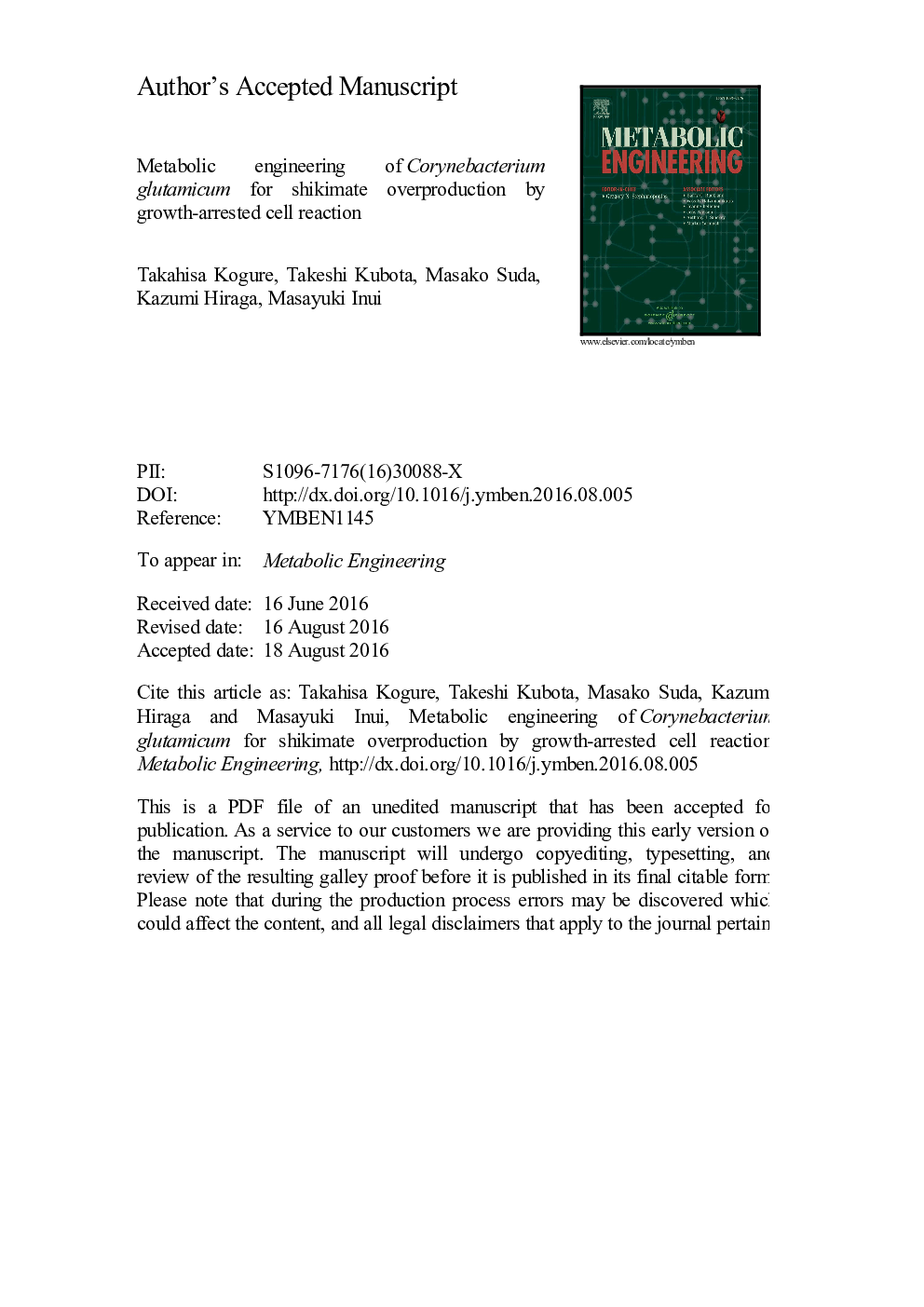| کد مقاله | کد نشریه | سال انتشار | مقاله انگلیسی | نسخه تمام متن |
|---|---|---|---|---|
| 6494196 | 44798 | 2016 | 37 صفحه PDF | دانلود رایگان |
عنوان انگلیسی مقاله ISI
Metabolic engineering of Corynebacterium glutamicum for shikimate overproduction by growth-arrested cell reaction
ترجمه فارسی عنوان
مهندسی متابولیک کورینباکتریوم گلوتامیکوموم برای تولید بیش از حد شیکیتم توسط واکنش سلولی بازداشت شده توسط رشد
دانلود مقاله + سفارش ترجمه
دانلود مقاله ISI انگلیسی
رایگان برای ایرانیان
کلمات کلیدی
موضوعات مرتبط
مهندسی و علوم پایه
مهندسی شیمی
بیو مهندسی (مهندسی زیستی)
چکیده انگلیسی
Corynebacterium glutamicum with the ability to simultaneously utilize glucose/pentose mixed sugars was metabolically engineered to overproduce shikimate, a valuable hydroaromatic compound used as a starting material for the synthesis of the anti-influenza drug oseltamivir. To achieve this, the shikimate kinase and other potential metabolic activities for the consumption of shikimate and its precursor dehydroshikimate were inactivated. Carbon flux toward shikimate synthesis was enhanced by overexpression of genes for the shikimate pathway and the non-oxidative pentose phosphate pathway. Subsequently, to improve the availability of the key aromatics precursor phosphoenolpyruvate (PEP) toward shikimate synthesis, the PEP: sugar phosphotransferase system (PTS) was inactivated and an endogenous myo-inositol transporter IolT1 and glucokinases were overexpressed. Unexpectedly, the resultant non-PTS strain accumulated 1,3-dihydroxyacetone (DHA) and glycerol as major byproducts. This observation and metabolome analysis identified glyceraldehyde-3-phosphate dehydrogenase (GAPDH)-catalyzed reaction as a limiting step in glycolysis. Consistently, overexpression of GAPDH significantly stimulated both glucose consumption and shikimate production. Blockage of the DHA synthesis further improved shikimate yield. We applied an aerobic, growth-arrested and high-density cell reaction to the shikimate production by the resulting strain and notably achieved the highest shikimate titer (141Â g/l) and a yield (51% (mol/mol)) from glucose reported to date after 48Â h in minimal medium lacking nutrients required for cell growth. Moreover, comparable shikimate productivity could be attained through simultaneous utilization of glucose, xylose, and arabinose, enabling efficient shikimate production from lignocellulosic feedstocks. These findings demonstrate that C. glutamicum has significant potential for the production of shikimate and derived aromatic compounds.
ناشر
Database: Elsevier - ScienceDirect (ساینس دایرکت)
Journal: Metabolic Engineering - Volume 38, November 2016, Pages 204-216
Journal: Metabolic Engineering - Volume 38, November 2016, Pages 204-216
نویسندگان
Takahisa Kogure, Takeshi Kubota, Masako Suda, Kazumi Hiraga, Masayuki Inui,
